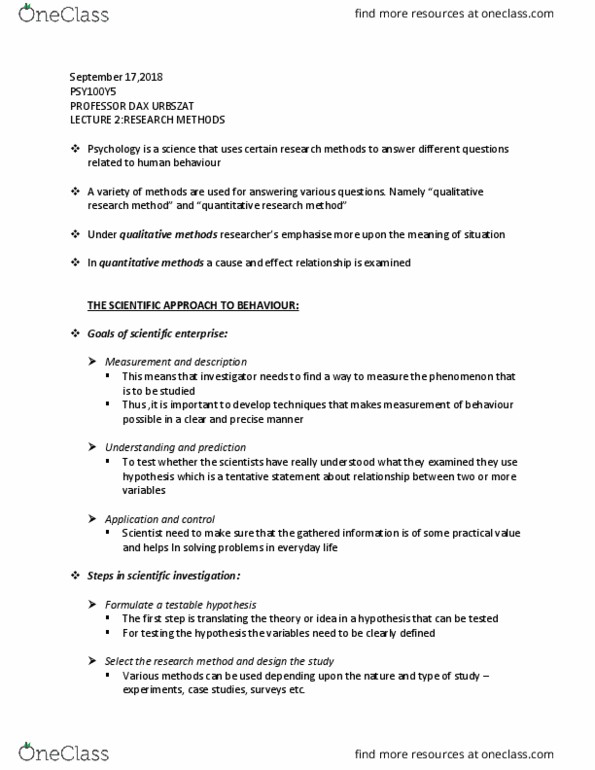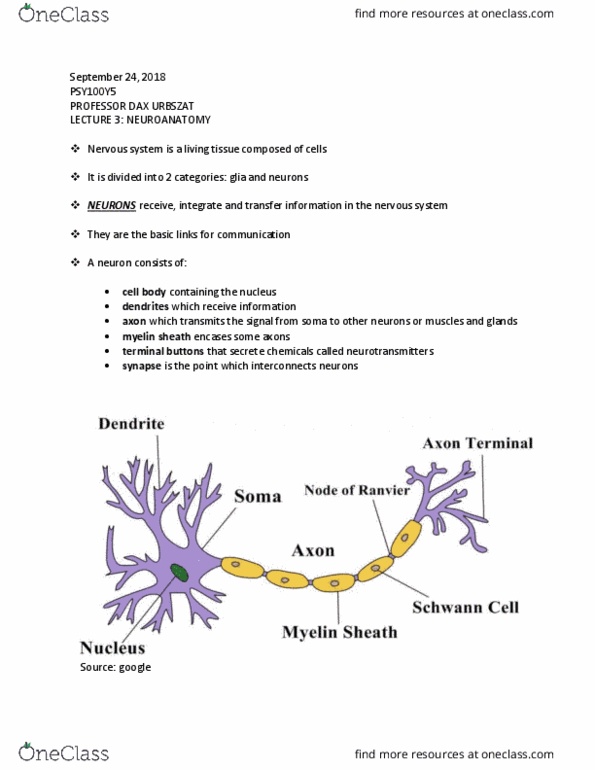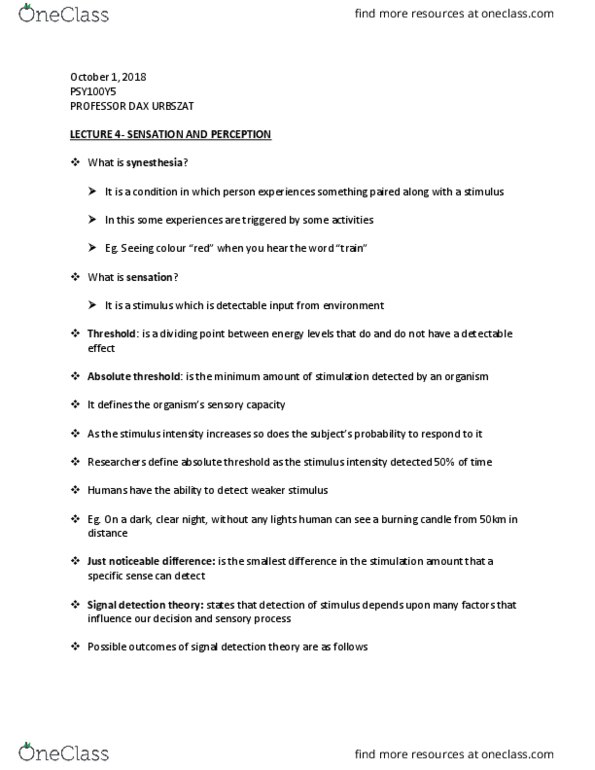PSY100Y5 Lecture Notes - Lecture 3: Limbic System, Schizophrenia, Midbrain
PSY100Y5 verified notes
3/12View all
Document Summary
Nervous system is a living tissue composed of cells. It is divided into 2 categories: glia and neurons. Neurons receive, integrate and transfer information in the nervous system. They are the basic links for communication. Glia: provide support to neurons and are found throughout the nervous system, glia are much smaller than neurons but are present in more numbers than neurons. It plays a critical role in development of nervous system in human body. The neural impulse: using energy to send information. In nervous system, the neural impulse works as a signal. Neurotransmitters carries information from one neuron to another. The synapse: once the neural impulse reaches terminal buttons, a chemical called neurotransmitter is released, this molecule diffuses along the synaptic cleft and bind to receptor sites on postsynaptic neuron. Neurotransmitter functions and characteristics: dopamine control voluntary movements, pleasurable. Emotions: norepinephrine modulation of mood and arousal, serotonin regulation of sleep, wakefulness, eating, Aggression: endorphins pain relief, glutamate learning and memory.





